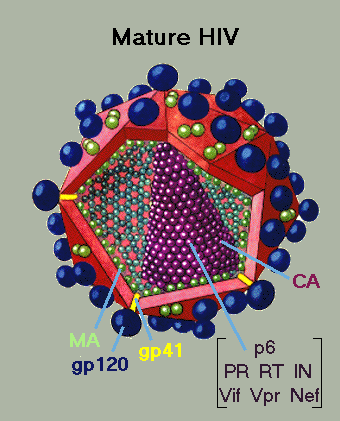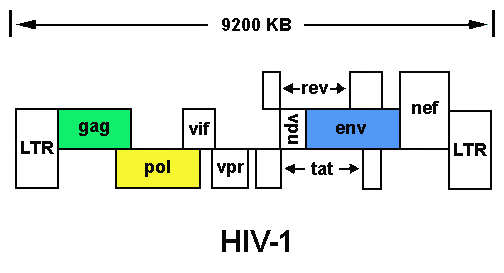| The
HIV-1 viral genome consists of nine open reading frames (ORFs) (Fig 2).
Three ORFs are prototypal of retroviridae: Gag, Pol,
Env. Gag
and Env encode the structural proteins. Gag
(group-specific antigen) encodes the proteins that
form the viral capsid: Matrix (MA), Capsid (CA), Nucleocapsid
(NU), and p6. Env encodes the envelope surface proteins:
Surface or gp120
(SU), Transmembrane or gp41 (TM).
Pol encodes the three catalytic enzymes: Reverse
Transcriptase (RT), Integrase
(IN) , and the Protease (PR). The
remaining six ORF encode accessory proteins: Vif, Vpr, Nef, Tat, Rev,
and Vpu. Tat
is a transcriptional activator. Rev
participates in the transport of mRNA to the cytoplasm.
Vpu promotes degradation of CD4 which is
coexpressed with Env in the newly translated molecules. Nef
advances the endocytosis and degradation of surface CD4 prior to viral
budding thus enhancing Env incorporation into the virion. The functions
of Vif and Vpr are less
defined:Vif participates in the production of mature virions and
Vpr
is thought to be involved in the initial stages
of viral infectivity. The synthesis of the gag-pol polyprotein
occurs by a ribosomal frameshift that occurs infequently, placing Gag
and Pol inthe same ORF. Because a frameshift must occur for the
pol gene translation, functional Pol proteins are a minor
component in comparison with structural products. |

